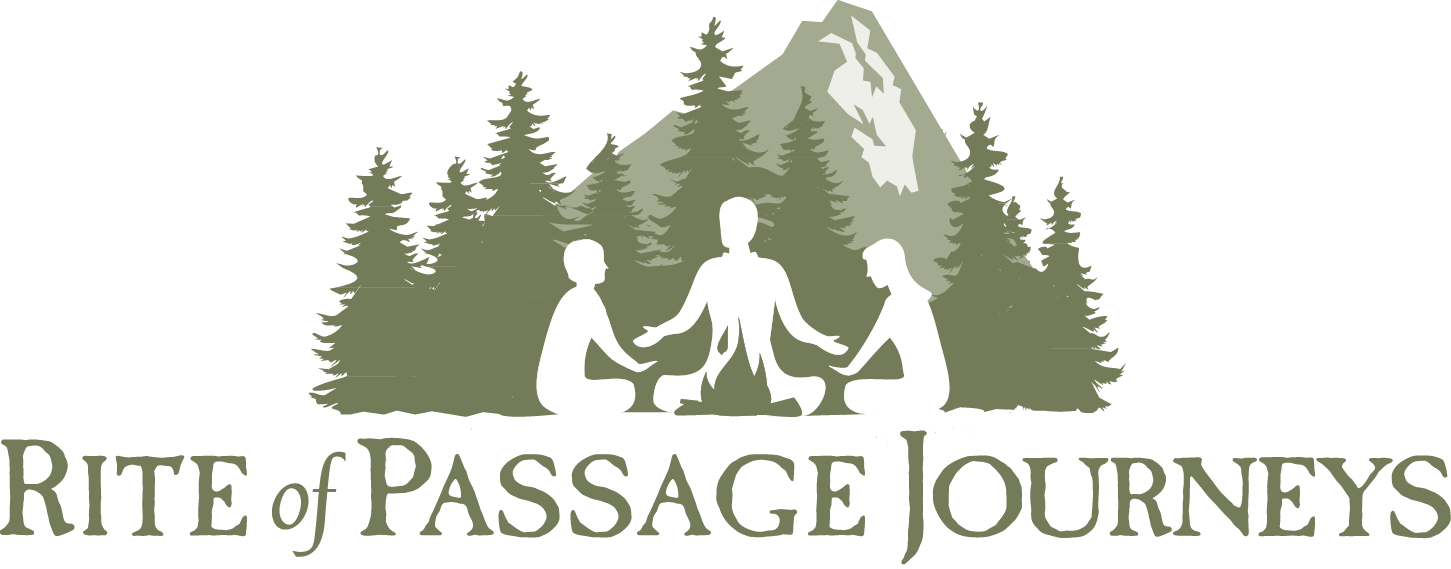By Tamara Walker
A few weeks ago, I casually offered to write a piece for Rite of Passage Journey’s new website. As I considered ritual as a possible topic, I heard Trickster whisper, “Write it quick! Don’t think too much and the words will write themselves.” Ritual means a great deal to me, but, after a few aborted attempts, I’m discovering how hard it is to explain why, and that words that matter don’t seem to write themselves.
The first task in my writing seems to be overcoming the heroic in me. Practicing as a veterinary surgeon for many years, I discovered the importance of trying, especially when I was most afraid of failing. In surgery, trying meant I had to push aside doubt and fear and move boldly regardless of how I felt. However, expressing something that I feel in my body requires a different attitude, and if I write from my old heroic place of resigned courage, my words fall out generic and lifeless. I discover I must slow down, listen, and open to the same feelings I buried as a surgeon and so carefully pretended weren’t there.
The kind of embodied ritual I’m trying to invoke is like difficult writing that says something real and conveys meaning beyond literal words. Good ritual, like good writing, is ruined by a grin-and-bear-it attitude and requires you to show up with everything you’ve got. It could be with a group of friends or strangers, or might simply be alone. Ritual is a delicate candle flickering or a drumming, thrumming explosion of sound. It’s most perfect place is exactly where you are: a beautiful cathedral, an old cracked basement, beside a laughing brook, or in the empty lot across the street. If you can stop long enough and resist the world of running and getting, to notice the texture of small things, you may find your way to that imaginal place where deeper conversation begins.
To try to further explain this kind of ritual, I turn to etymology. The word ritual is associated with religion, from the Latin, relegere, meaning: to pay close attention to what is numinous (Corbett, 2013). Numinous was originally described by Rudolf Otto (1958) in his work, The Idea of the Holy, as a creature-feeling that couldn’t be strictly defined or taught but only evoked (p.7). Numinous also describes the feeling ritual can evoke in my body when I manage to connect to something much greater than myself. Numinous and holy aren’t common descriptions for ritual in our dominant culture, so I also looked ritual up in the APA Dictionary of Psychology. Although I wasn’t surprised, the definition used hard words like compulsion and rigidity. I felt more like drowning than dancing with the dictionary’s description of a sacred ritual pouring water on the ground to make rain as a misguided, manipulative, and imitative attempt to use symbolism to control natural forces for human ends (p. 802). A ritual may symbolically bridge earth and heaven through a vessel of water, but limiting its meaning to cause and effect this way reveals more about the blindness and confusion around ritual than what it actually might be. How did ritual become the source of such dead definitions? Such derogatory words attempt to put ritual in a box saying, “Here lies the irrational. Do not open.” Sometimes it’s easier to define something by what it’s not, and in loaded words like manipulative and imitative, and by comparing ritual to an obsessive-compulsive disorder, our cultural fear of the unknown becomes hidden in our desire for its containment.
However, just because something is intangible doesn’t mean we can contain it. In The Art of Inquiry: A Depth Psychological Perspective, depth psychologists Joseph Coppin and Elizabeth Nelson (2005) describe ritual differently as an honoring of what is invisible and intangible. Depth psychology investigates what happens beneath the surface, and is more interested in what we don’t know and what we’re missing than what we believe we can control. To me, in giving these missing things a name, the “invisibles and the intangibles,” we start making them real and a relationship with them possible. When we speak of immaterial things that nevertheless have weight and meaning, other difficult, lost words like fate and soul also appear. Our materialistic culture teaches us the world is dead and to value only what it can do for us when we use it and sell it. We incorrectly think invisible and intangible means only the signal we don’t understand in our TV, Bluetooth, and iPhones. But, an older vision of a living, breathing world of enchanted beings with their own inherent value also exists. This world has been called the anima mundi, the soul of the world. Ritual teaches us again what we once knew: to listen to the whispering of our bodies, the way the wind talks when it gently lifts our hair, or the mysteries and the stories the river can tell.
Last summer I found an empty stretch of sandy beach and walked a meditative walk in the shape of an infinity symbol. I dreamed a few weeks earlier that I was this symbol, and in response, a friend recommended a meditation she called “Walking the lemniscate.” As the waves lapped on shore and I slowly paced the figure-eight in the deep soft sand, the connections between my body, the wind, the birds, and the earth sang. I felt I was a being that belonged. These are slow things whose greatest gifts are hidden in the experience itself: learning how to write words that matter, or finding one’s way into personally meaningful ritual beyond just going through the motions. For me, ritual is the juice of life, where human beings go to drink the creative energies of the cosmos and be reminded why we’re here, that we aren’t alone, and what the world might be asking of us.
REFERENCES
American Psychological Association (2007). APA Dictionary of Psychology. Washington, D.C.: American Psychological Association
Coppin, J. & Nelson, E. (2005). The art of inquiry: A depth psychological perspective (2nd ed). Putnam, CT: Spring Publications.
Corbett, L. (2013). Jung's approach to spirituality and religion. In K. Pargament (Ed.), APA handbook of psychology, religion, and spirituality (Vol. 2, pp. 147-167). Washington, D.C.: APA Press.
Jung C.G. (1969). Psychology and religion. (R.F.C. Hull, Trans.). In H. Read et al. (Series Eds.), The collected works of C.G. Jung (Vol. 11, pp. 5-105). Princeton, NJ: Princeton University Press. (Original work published in 1937)
Otto, R. (1958). The idea of the holy. New York: NY: Oxford University Press












